Ulsan (울산(蔚山)) is a city in South Gyeongsang. It is the capital of the Ulsan Metropolitan District.
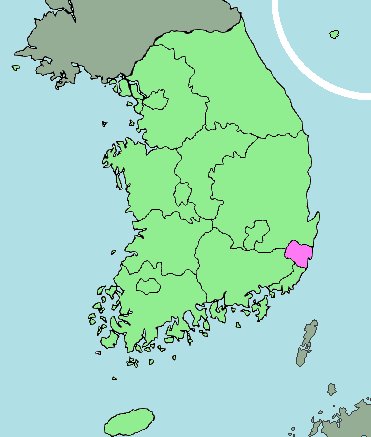
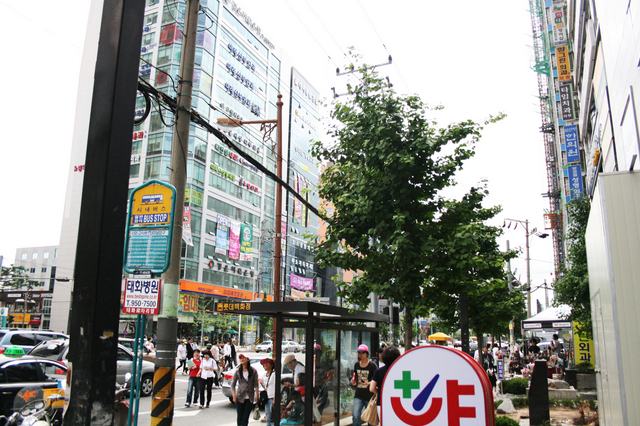
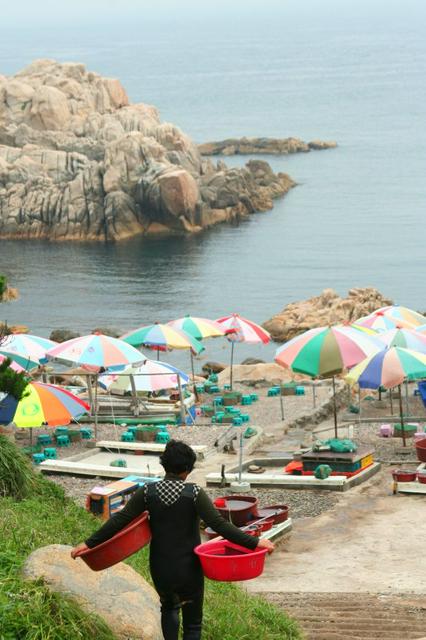
Ulsan is a seaside metropolitan city in the southeast of Korea with a population of 1.2 million. The city is known for its whaling heritage and as the industrial heart of the country.
While Ulsan is not listed in many tourist guides, it is the gateway to the Yeongnam Alps, considered to be one of the most beautiful national parks in South Korea. It also has twelve designated "Scenic Areas", from natural icons to man made buildings. Today the city lives in a Catch-22 situation; in some districts it is impossible to escape the industries. Although these industrial sites are breath-taking in scope, a testament to the achievement of man, they blight the landscape. On the other hand, the investment from these industries undeniably makes the city an better place to be. Ulsan was a World Cup 2002 host city.
Ulsan City is 70 km north of Busan, but also close to Gyeongju, Daegu and Pohang.
Ulsan includes 4 wards ("Gu") and 1 county ("Gun"):
- Buk-gu (북구; 北區) - The most northern the four Gu and rapidly developing due to the lack of pollution in the area.
- Dong-gu (동구; 東區) - The location of Bangeojin, Hyundai and a large amount of the city's ship building industry (including the largest ship-yard in the world).
- Jung-gu (중구; 中區)
- Nam-gu (남구; 南區)
- Ulju-gun (울주군; 蔚州郡)
Samsandong, home of the Lotte and Hyundai department stores, can be considered the up-market district. Western fashion brands are available along with a number of western chain restaurants. The neon lit back streets yield a vibrant bar and restaurant culture. The Lotte Ferris wheel is also in this area next to the Lotte Cinema.
Old down-town, Seongnamdong, is good for shopping at low, local prices (there are brand goods shops too however). It is the location of a small number of foreigner friendly/foreigner run bars.
Mugeodong, the home of Ulsan University, is the best place for the young, twenty-somethings wishing to eat, drink and party.
The best months tend to be from March through May before it gets too hot. Summer serves up a heavy sweat-inducing humidity along with prolonged rain showers mixed with the occasional typhoon. It remains warm until late October (cited by many to be the best month) at which point the weather turns cold. But it is not uncommon even in December to have warm spells with temperatures plummeting at night. Ulsan sees little snow due to its southerly position on the Korean peninsular - however that is not to say that snow can not fall. When it does fall, it can be heavy.
The primary language of Ulsan is Korean. English is not common especially among the older generations and many younger Koreans are shy about using their language skills. They'll often nod and say yes without really having understood a question - which can lead to problems when asking for directions. The Korean phrasebook should provide some useful words and expressions.
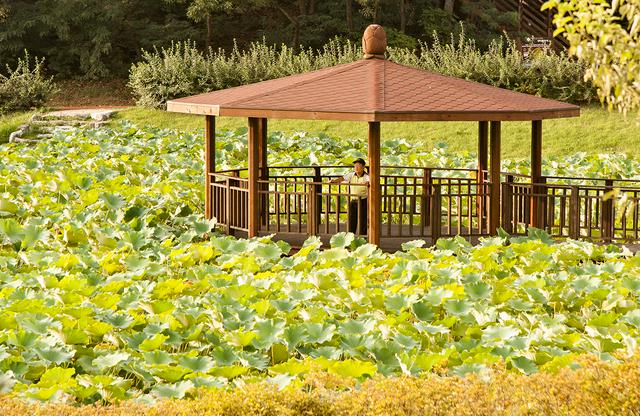
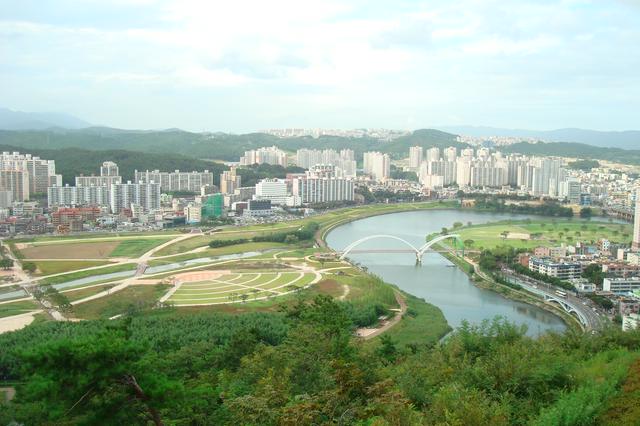 Ulsan has designated Twelve Scenic Areas of interest to tourists visiting the city.
Ulsan has designated Twelve Scenic Areas of interest to tourists visiting the city.
- Four Seasons of Mt Gaji. Selected as one of the 100 Most Beautiful Mountains in Korea, Mt Gaji is the tallest mountain in Ulsan. There are well marked hiking trails up the mountain and are accessible from Seongnamsa Temple.
- Sunrise at Ganjeolgot. The first sunrise in Northeast Asia can be seen from Ganjeolgot. It is a popular destination for New Year celebrations.
- Black Pebble Beach at Gangdong and Jujeon Seashore. The beach is filled with, well, black pebbles.
- Daewangam Songnim. This coastal area is filled with rock formations, 15,000 pine trees and views of the East Sea.
- Naewonam Valley of Mt Daeun. The tranquil valley is filled with pools of water and waterfalls next to large stones. The Naewonam Temple is also located in the valley amidst the mountain scenery.
- The Night View of the Ulsan Industrial Complex from Mt Muryong. While looking over an industrial complex might not seem like a tourist attraction, the view is something out of Blade Runner or Koyaanisqatsi. Take your tripod to get the best night photos.
- Bangudae. Bangudae refers to the turtle shape of the mountain. This natural area is filled with mountains, valleys and rock formations. It also houses the Bangudae Boulder Petroglyphs from the stone age, a designated national treasure.
- Eoksae (Reed) Plain of Mt Sinbul. Mt Sinbul is the second tallest mountain in Ulsan, with a vast plain covered in reeds. Like Mt Gaji, it is considered to be one of the 100 most beautiful mountains in Korea.
- Ulsan Sports Complex. If you enjoy visiting random stadiums, then by all means, go to the Ulsan Sports Complex, although it seems like it only made the list because Koreans love soccer. Home to one of South Korea's many soccer teams.
- Jakgwaecheon. Formed by many years of water erosion, the river runs straight past a temple. The rocks are engraved with Korean characters and is an excellent place for photography.
- Seonbawi (Standing Rock) and Simnidaebat (Bamboo Grove) of Taehwa River. The combination of rocks, river and the bamboo forest create a breathing space in a highly industrial city. It is linked to the Taehwagang River Grand-Park.
- Paraeso waterfall. A 15-meter-high waterfall with the reflection of the mountain in the pool below.
Four Seasons of Mt Gaji. Selected as one of the 100 Most Beautiful Mountains in Korea, Mt Gaji is the tallest mountain in Ulsan. There are well marked hiking trails up the mountain and are accessible from Seongnamsa Temple.
Sunrise at Ganjeolgot. The first sunrise in Northeast Asia can be seen from Ganjeolgot. It is a popular destination for New Year celebrations.
Black Pebble Beach at Gangdong and Jujeon Seashore. The beach is filled with, well, black pebbles.
Daewangam Songnim. This coastal area is filled with rock formations, 15,000 pine trees and views of the East Sea.
Naewonam Valley of Mt Daeun. The tranquil valley is filled with pools of water and waterfalls next to large stones. The Naewonam Temple is also located in the valley amidst the mountain scenery.
The Night View of the Ulsan Industrial Complex from Mt Muryong. While looking over an industrial complex might not seem like a tourist attraction, the view is something out of Blade Runner or Koyaanisqatsi. Take your tripod to get the best night photos.
Bangudae. Bangudae refers to the turtle shape of the mountain. This natural area is filled with mountains, valleys and rock formations. It also houses the Bangudae Boulder Petroglyphs from the stone age, a designated national treasure.
Eoksae (Reed) Plain of Mt Sinbul. Mt Sinbul is the second tallest mountain in Ulsan, with a vast plain covered in reeds. Like Mt Gaji, it is considered to be one of the 100 most beautiful mountains in Korea.
Ulsan Sports Complex. If you enjoy visiting random stadiums, then by all means, go to the Ulsan Sports Complex, although it seems like it only made the list because Koreans love soccer. Home to one of South Korea's many soccer teams.
Jakgwaecheon. Formed by many years of water erosion, the river runs straight past a temple. The rocks are engraved with Korean characters and is an excellent place for photography.
Seonbawi (Standing Rock) and Simnidaebat (Bamboo Grove) of Taehwa River. The combination of rocks, river and the bamboo forest create a breathing space in a highly industrial city. It is linked to the Taehwagang River Grand-Park.
Paraeso waterfall. A 15-meter-high waterfall with the reflection of the mountain in the pool below.
- Ulsan Petroglyph Museum, 333-1, Cheonjeon-ri, Dudong-myeon, Ulju-gun.
- Jangsaengpo Whale Museum and Whale Experience Hall, 39-29 Maeam-dong, Nam-gu, Ulsan.
- Oegosan Pottery Village.
Ulsan Petroglyph Museum, 333-1, Cheonjeon-ri, Dudong-myeon, Ulju-gun.
Jangsaengpo Whale Museum and Whale Experience Hall, 39-29 Maeam-dong, Nam-gu, Ulsan.
Oegosan Pottery Village.
Popular on Munsu Mountain, the tallest in the city. Over 100 sport routes are available from 5.8 up to 5.13
Ulsan is the gateway to Gayasan National Park and is accessible from Eonyang, a suburb of Ulsan. Take a bus to the Eonyang terminal and change for a bus heading to Seongnamsa. Hiking in the numerous mountains around the city is very popular, especially among the Koreans. Just about any wooded area will be flush with hiking trails.
The city has a fabulous river park with walking, running and biking trails. Flowers are plentiful and make for pleasant journeys along the river.
- Ilsan Beach At the entrance to Daewangam Park, the beach can get incredibly crowded in summer as Koreans flock to the limited space. 977 Ilsan-dong, Dong-gu, Ulsan.
- Jinha Beach Across from Myeongseondo Island, this beach is surrounded by forests of pine trees. 307-2 Jinha-ri, Seosaeng-myeon, Ulju-gun.
Ilsan Beach At the entrance to Daewangam Park, the beach can get incredibly crowded in summer as Koreans flock to the limited space. 977 Ilsan-dong, Dong-gu, Ulsan.
Jinha Beach Across from Myeongseondo Island, this beach is surrounded by forests of pine trees. 307-2 Jinha-ri, Seosaeng-myeon, Ulju-gun.
Watch football at Munsu Football Stadium (home to Ulsan Hyundai FC).
- Pho Bay. Pho Bay is a great Vietnamese restaurant. Try the pho noodle soup. 7~10,000.
- Ulsan Wholesale Fish Market, Samsan-ro, 5 minute walk east from Lotte Hotel. This market is similar to Jagalchi Fish Market in Busan. Customers choose their fish, and the fish is prepared on the spot. Prices are fixed but it can be possible to negotiate some extra fish at no additional cost, though vendors here generally do not speak English. Common dishes include hoe (raw fish, pronounced "hway"), sannakji (dead but still moving octopus), and various fish soups. A small fee is added to the price of the fish for its preparation. Dishes are usually accompanied by vegetables, various sauces, and kimchi. Beer or soju can be purchased for around ₩4000 a bottle. The market also sells whale meat, and it is sometimes possible to see a whale being butchered at the exterior of the building.
Pho Bay. Pho Bay is a great Vietnamese restaurant. Try the pho noodle soup. 7~10,000.
Ulsan Wholesale Fish Market, Samsan-ro, 5 minute walk east from Lotte Hotel. This market is similar to Jagalchi Fish Market in [[Busan]]. Customers choose their fish, and the fish is prepared on the spot. Prices are fixed but it can be possible to negotiate some extra fish at no additional cost, though vendors here generally do not speak English. Common dishes include hoe (raw fish, pronounced "hway"), sannakji (dead but still moving octopus), and various fish soups. A small fee is added to the price of the fish for its preparation. Dishes are usually accompanied by vegetables, various sauces, and kimchi. Beer or soju can be purchased for around ₩4000 a bottle. The market also sells whale meat, and it is sometimes possible to see a whale being butchered at the exterior of the building.
The second floor of the Samsandong Skyrex apartment building (the tall twin buildings that can't be missed) hosts a buffet called D'Maris which is focused on seafood, but also hosts a large variety of other dishes and is quite delicious. Cost is ₩36,300 per person.
- Bench Warmers. Great foreigner bar in Shinae (Old Downtown). They host a poker game on a weekly basis.
Bench Warmers. Great foreigner bar in Shinae (Old Downtown). They host a poker game on a weekly basis.
Ulsan, like any city in South Korea, is very safe.
There are many other cities nearby that are cool to check out for a weekend tour.
- Busan (부산, 釜山) is an hour away by bus from Samsandong. South Korea's second city, there's something for everyone there.
- Gyeongju (경주, 慶州) Ancient capital of the Silla Dynasty a short bus or train ride north. Home of Bulguksa Temple and Seokguram Grotto. It's an open-air museum and not to be missed.
- Daegu (대구, 大邱) Large city with it's own unique sights to see.
- Pohang (포항, 浦項) Industrial grit and grim, but a marvelous beach, compact and eminently walkable downtown make this an alternative weekend break.
[[Busan]] (부산, 釜山) is an hour away by bus from Samsandong. South Korea's second city, there's something for everyone there.
[[Gyeongju]] (경주, 慶州) Ancient capital of the Silla Dynasty a short bus or train ride north. Home of Bulguksa Temple and Seokguram Grotto. It's an open-air museum and not to be missed.
[[Daegu]] (대구, 大邱) Large city with it's own unique sights to see.
[[Pohang]] (포항, 浦項) Industrial grit and grim, but a marvelous beach, compact and eminently walkable downtown make this an alternative weekend break.
